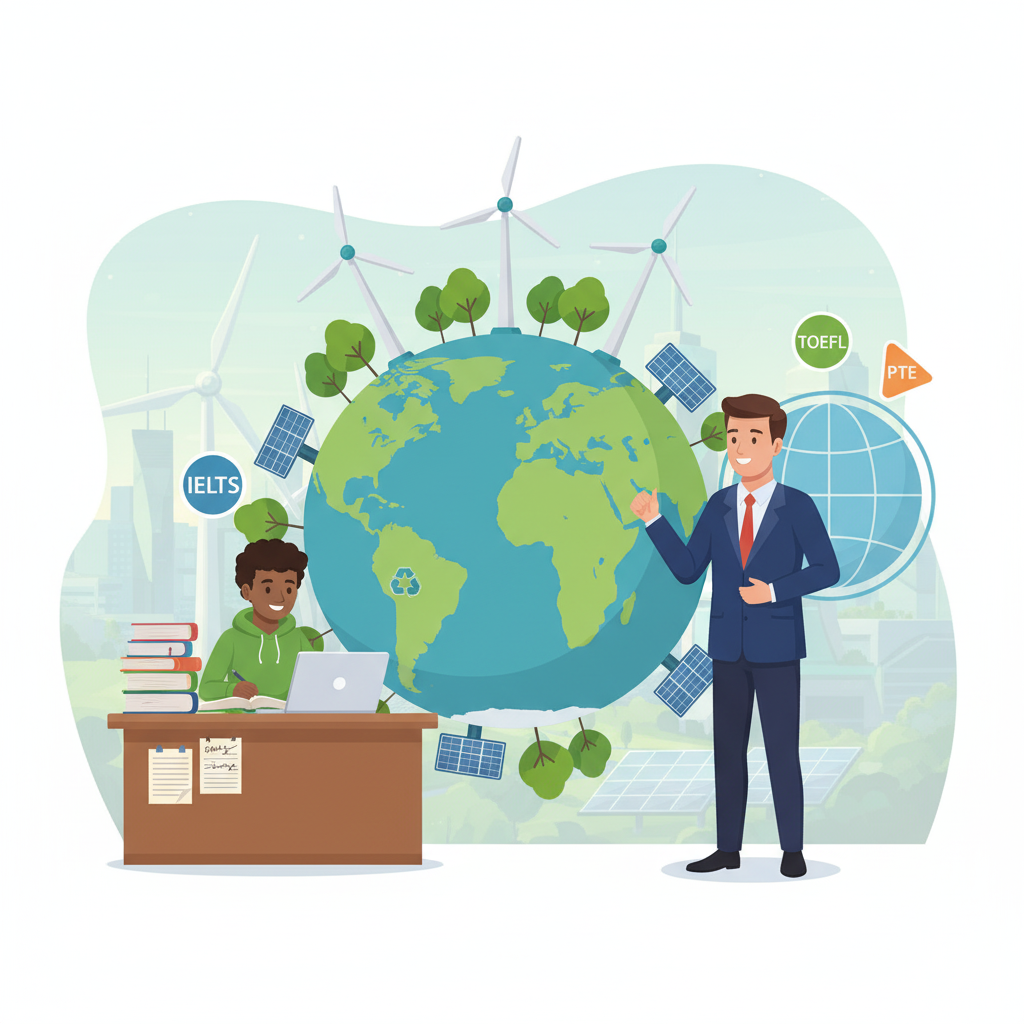
When it comes to IELTS, TOEFL, or PTE, environmental issues are some of the most common topics in both the Writing and Speaking sections. To achieve a high score, you need more than just ideas—you need precise, natural vocabulary. This post provides a curated list of environmental collocations along with practical exercises and activities to help you boost fluency, expand vocabulary, and impress examiners with accurate language use.
Environment
Climate change and pollution
- greenhouse gas emissions → Reducing greenhouse gas emissions is vital to slow warming.
- rising sea levels → Rising sea levels threaten low-lying coastal communities.
- global warming → Global warming alters rainfall patterns and agricultural cycles.
- carbon footprint → Individuals can shrink their carbon footprint by using public transit.
- industrial waste → Improper disposal of industrial waste contaminates rivers.
- air quality deterioration → Air quality deterioration affects respiratory health in cities.
- climate crisis → Many experts describe the situation as an unfolding climate crisis.
- biodiversity loss → Habitat destruction accelerates biodiversity loss around the world.
- sustainable practices → Businesses are adopting sustainable practices to attract conscious consumers.
- environmental regulations → Stricter environmental regulations limit hazardous emissions from factories.
Conservation and sustainability
- wildlife protection → International treaties support wildlife protection and anti-poaching efforts.
- forest preservation → Forest preservation helps to conserve biodiversity and sequester carbon.
- sustainable agriculture → Sustainable agriculture reduces chemical runoff and soil erosion.
- eco-friendly lifestyle → An eco-friendly lifestyle can reduce household waste dramatically.
- water conservation → Water conservation is urgent in drought-prone regions.
- recycling initiatives → Recycling initiatives in cities have cut landfill volumes.
- waste management → Effective waste management reduces pollution and health hazards.
- environmental awareness → Environmental awareness campaigns encourage community participation.
- natural habitat → Urban expansion often fragments the natural habitat of wildlife.
- conservation efforts → Local conservation efforts can protect migratory bird routes.
Renewable energy vs fossil fuels
- solar power → Investment in solar power has grown because panels are cheaper.
- wind turbines → Offshore wind turbines produce large amounts of clean energy.
- hydroelectric energy → Hydroelectric energy provides reliable baseload power in some regions.
- clean technology → Clean technology investments create jobs and lower emissions.
- fossil fuel dependency → Many economies struggle to reduce fossil fuel dependency quickly.
- energy transition → An equitable energy transition requires policy and training programs.
- sustainable energy sources → Governments subsidize sustainable energy sources to encourage adoption.
- coal consumption → A drop in coal consumption has improved urban air quality.
- nuclear power → Some argue nuclear power is necessary for low-carbon baseload energy.
- renewable infrastructure → Building renewable infrastructure needs significant upfront capital.
Urbanization and its impact
- rapid urban growth → Rapid urban growth places pressure on housing and services.
- rural-to-urban migration → Rural-to-urban migration increases demand for city jobs and housing.
- urban sprawl → Unchecked urban sprawl consumes valuable farmland and habitats.
- infrastructure development → Infrastructure development must keep pace with population increases.
- housing shortages → Housing shortages push rental prices beyond many residents’ means.
- traffic congestion → Traffic congestion wastes time and raises pollution levels.
- overcrowded cities → Overcrowded cities struggle to provide adequate sanitation services.
- air pollution → Transport and industry are major contributors to urban air pollution.
- urban planning policies → Progressive urban planning policies can create greener cities.
- quality of life → Access to parks and services improves urban residents’ quality of life.

